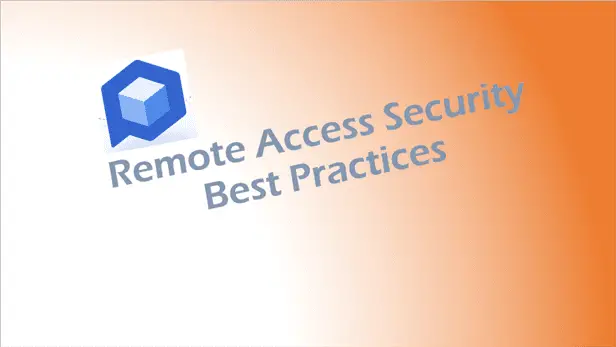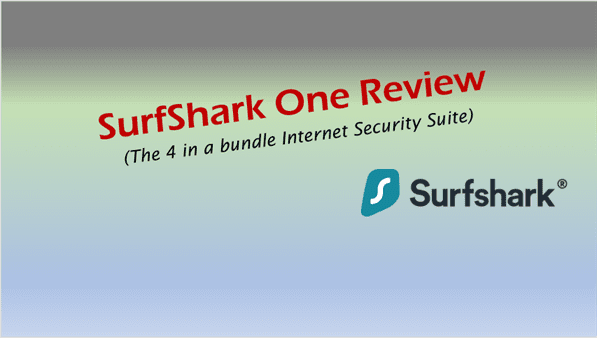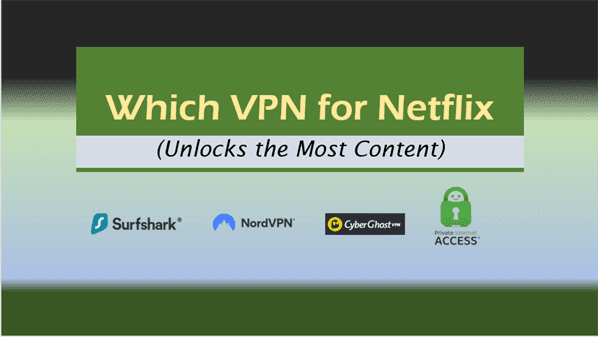Remote Access security Best Practices
Remote access security best practices that can help you protect your business network even though operational circumstances have changed. Simply put, businesses depended on the Office perimeter to provide protection so most employees had to go to the office to access company resources. Now the situation is different.
Through necessity employees were required to work from home so protection of company network had to shift to be focused around the user and the device they use to connect, rather than the traditional office-based perimeter protection.
Remote Access security Best Practices
Increasing numbers of remote workers has brought new challenges for IT admins. The need to secure the remote access environment to protect business data.
Remote Access security Best Practices – Introduction
Providing secure, fast remote access is a central concern for organizations in today’s modern business environment.
The world of business has changed in many ways, and employees now choose to – or in some cases – must work from outside the office.
Although it may have a positive effect on employee productivity and morale, this reality has complicated the idea of network security significantly.
The growth of sensitive IT resources that now reside in the cloud as well as locally, on-premises, add to this mix the devices used to access these IT assets include more powerful technologies such as smartphones, tablets and laptops.
According to an IDC report1 on worker productivity,
“A bigger percentage of employees work remotely or from a home office today. And workgroups often span the globe. Web and video conferencing and tools such as instant messaging and instant meetings let people collaborate in real time across distance, time zones, and organizational boundaries, and mobile devices help them be productive on the go.”
IDC report1
These devices are connected to numerous important cloud-hosted applications, which now comprise a majority of organizations’ networks.
Such flexibility allows businesses to rapidly build the infrastructure they need to succeed, and it’s become so beneficial that over 84%2 of organizations now host at least one essential function in the cloud.
Of these, 58% use a hybrid-cloud model, making use of multiple cloud environments alongside local resources.
This has contributed heavily to the modern digital era, where employees can work as efficiently as if they were at their desks, but in reality, working from wherever they’re most comfortable.
As you can see above, the trend towards remote access is becoming the status quo.
However, when the need for remote access is more rapid, networks may experience strain and expose themselves to data breaches if not properly secured.
If your organization is presently grappling with this notion, the following checklist allows you to prepare, and provide speedy, safe access to any number of remote employees no matter where they’re working from.
The reason why Remote Work is Inevitable for Organizations.
The Covid pandemic has governments around the world to enforce remote working where possible so some companies have had to implement remote working for their employees if they didn’t have this in place before the pandemic.
The introduction of remote or flexible work policies has proven to suit all age groups, with over 68% of employees indicating that the trend benefits their work-life balance.
It then makes sense that while over 70% of 18 to 34-year-olds take advantage of the freedom to work from anywhere, more than half of workers around age 60 do as well.
As younger workers replace older employees, their preferences for work are brought along as well.
Flexible Work Preference and Age Groups
This trend has amazing results for organizations:
• 13% of remote workers take fewer sick days and report higher productivity
• This will save over $4.5 billion by 2030 in the USA
• Instituting flexible work increases employee retention by 10% in 20203
Secure Remote Access Checklist
This secure remote access checklist helps you prepare and plan your deployment to protect your data from ending up in the wrong hands even with increasing number of remote workers.
Apart from government enforced lockdowns that encourage remote working, studies have shown that 70% of potential employees consider remote work an integral factor in whether or not to take a new position.
IT admin teams need to be ready for an influx of remote workers requesting access IT resources, via a variety of devices, and possibly over unsafe Wi-Fi connections. Accordingly, several things must be considered before you can be confident that the network is safe and protected:
1. Transition from Perimeter-Centric to User-Centric
It’s challenging to apply the perimeter-centric security approach to a network that’s constantly changing shape. Organizations that grant full network access to anyone with credentials risk their data by default, as a permissive access model neglects gaps in security that occur when numerous connections are remote.
Zero Trust is the answer because it reduces the attack surface with authentication happening first based on user ID, their device, and along with other contextual attributes.
2. A Secure Network as a Service (VPN Alternative)
Virtual Private Networks (VPNs) are an essential element of safe networking, as they require employees to first log into a mobile, web, or desktop application that then creates an encrypted tunnel between their device and the resources they require to do their jobs.
Wireguard and IPsec tunnelling ensure it is easy for IT admin teams to track how people move through the network, and to stay aware of their activity.
NaaS (Network as a Service) is the evolution of this idea and incorporates additional critical features such as for example more precise user segmentation, Secure Web Gateway, and others.
3. A Cloud-Friendly Approach
Given the near connectedness of hybrid-cloud networks, security solutions must be cloud agnostic, and in a position to seamlessly integrate into whichever Software as a Service (SaaS) or cloud-hosted resources the organization uses on a daily basis.
Being Cloud Agnostic means building your architecture to utilize everything open-source technologies and portable components have to offer, this architecture is built to be able to switch providers easily, or even allow for the use of multiple cloud providers simultaneously.
Cloud Agnostic vs. Cloud Enabled vs. Cloud Native
Local assets may also be included in this idea in order that no matter which applications, data and file storage sources, or systems the employee is using, they’re all section of the same secure environment.
This also eases the burden on IT admin teams, who must otherwise manually configure many systems to work together in tandem.
4. Defense Against Unsecured Wi-Fi
One of the biggest gaps in security that occurs when remoteness becomes a central theme within network access, is public Wi-Fi4, or simply unsecured Wi-Fi.
Many employees will work from home cafes, or places where the internet connection is less secure than if they were at the office, so the Wi-Fi security approach taken by organizations must account for this glaring threat and act accordingly.
Surveys show that over 60% of people believe their connection is safe when connected to public Wi-Fi, despite heavy evidence to the contrary.
5. Geographically Diverse Data Solutions
Concentrating a virtual private network and security solution in a single physical location will not suffice for larger organizations with many remote employees, who likely live all over from their office or their local branch.
It’s therefore vital to find a provider with multiple data centers across the world, so employees can then connect to the nearest server for the resources they need, which reduces latency and increases productivity for the whole organization.
6. 2+ Layers of Authentication
Requiring employees to authenticate themselves more than once is a common technique employed for comprehensive network security, as it ties network access to the proper credentials and additionally the employee’s personal mobile device.
It is a very easy safety net to set up, and at minimum, the network security model employed should include Google Authenticator via application or SMS.
7. Bring Your Own Device (BYOD) Accountability
Most modern devices are capable of connecting to a remote network and be used for work, and with employees utilizing a wide variety of smartphones, tablets, and laptops, it doesn’t pay to be narrow-minded with regards to security.
Actually, it literally pays to be pro-BYOD, with employees generating an additional $350 per capita5 in value when permitted to use their own devices for work.
The greatest network security solutions are dynamic and consider users and their chosen devices on an individual basis, covering all endpoints with the same performance and flexibility.
8. Effortless Onboarding for IT admin teams
Suitable network security models allow IT admin teams to effortlessly onboard new users into the system, assign them a profile or segment which grants access consistent with their role, and specific rules concerning how their device connects.
If the IT admin team is given this capability, then they’ll be more likely to respond efficiently if the need for remote access spikes across the organization.
9. Seamless Logins
Almost like a digital ID card, user-friendly features like Single Sign-On (SSO) are fundamental to a user-centric security model and helps reduce organizational liability for storing credentials.
It’s especially powerful when coupled with user segmentation features, and should be prioritized for companies that put a premium on productivity, reducing help desk costs, and streamlining the login process.
10. Agentless Remote Desktop
For in-browser access to data in the cloud, Remote Desktop Protocol (RDP) is a much, appreciated addition to any network security apparatus, and will benefit particularly distributed workforces.
The simplicity and agentless nature of RDP helps it be one of the strongest and most lightweight building blocks of a secure network, but also one that maintains its accessibility to remote employees.
Remote Access Solutions for Small Business
A Quick Win with Perimeter 81 Secure Remote Access
Perimeter 81 is a Zero Trust Network as a Service (NaaS) that has taken the outdated, hardware-based and complex traditional network security technologies, and transformed them into a user-friendly and easy-to-use software solution – simplifying secure network access for the modern and distributed workforce.
Perimeter 81 serves a wide range of businesses, from midsize to Fortune 500 companies, and has established partnerships with the world’s foremost integrators, managed service providers and channel resellers
Zero Trust Access
Network and application access through Perimeter 81 is totally Zero Trust, with continual monitoring for superior visibility.
Cloud Agnostic
Integrate Perimeter 81 with any and every cloud-hosted SaaS application or resources, plus your local environment.
Remote Desktop
Grant employee’s easy connectivity to virtual PCs via Remote Desktop Protocol (RDP), for easy access to resources crucial for his or her role.
Multi-Factor Authentication
Guarantee authorized and secure remote access with support for multiple types of 2-factor authentication, including via Google.
Instant Onboarding
Instant protection for the whole organization, with or without an agent. IT teams can easily add new users and rules according to policy.
30+ Data Centers
Low latency for remote workers is expected with Perimeter 81, as they operate many worldwide data centers closer to those requesting access.
Endpoint-to-Endpoint
Extend your comprehensive security policy across all devices connecting to the network, whether laptops, tablets, or smartphones.
Single Sign-On
Reduce password exhaustion and simplify username and password management with built-in SSO utility.
Automatic Wi-Fi Security
Perimeter 81’s automatic Wi-Fi security feature instantly routes remote employees through a secure server if their connection is unsecured.
Remote Access VPN
Perimeter 81 deploys a Software Defined Perimeter around your organization’s network, and IPsec tunnelling for encrypted remote access.
About Perimeter 81
Perimeter 81 is a Zero Trust Network as a Service that has taken the outdated, complex and hardware-based traditional network security technologies, and transformed them into a user-friendly and easy-to-use software solution – simplifying secure network access for today’s distributed workforce.
Perimeter 81 serves a wide range of businesses, from midsize to Fortune 500 companies, and has established partnerships with the world’s foremost integrators, managed service providers and channel resellers.
- https://warekennis.nl/wp-content/uploads/2013/11/bridging-the-information-worker-productivity-gap.pdf
- https://www.flexera.com/blog/cloud/2019/02/cloud-computing-trends-2019-state-of-the-cloud-survey/
- https://www.nortonlifelock.com/content/dam/nortonlifelock/docs/reports/2017-norton-wifi-risk-report-global-results-summary-en.pdf
- https://techjury.net/stats-about/byod/#gref






